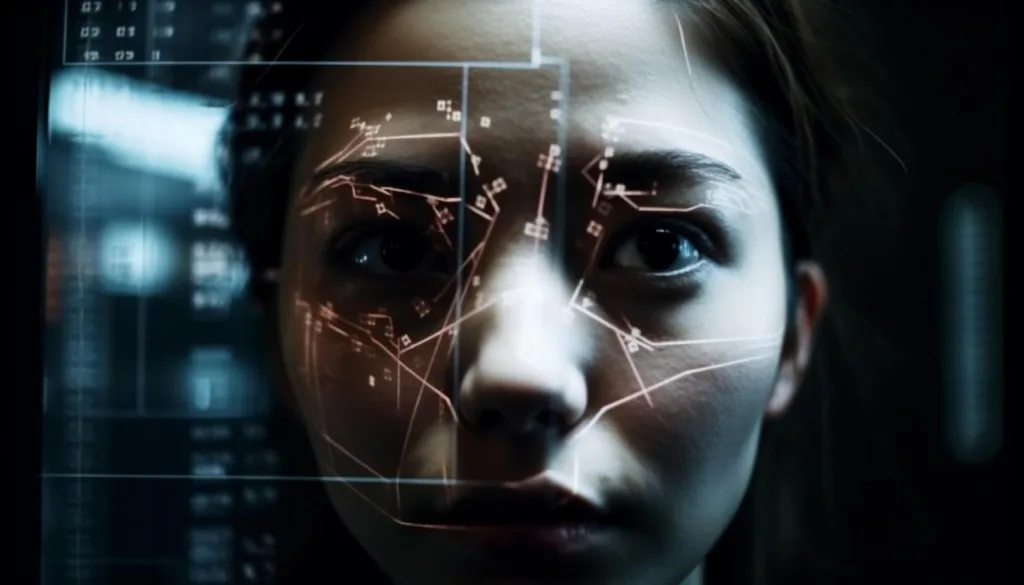Deepfake technology, a branch of Generative AI, is proliferating across the tech industry, resulting in a myriad of examples that range from entertainment to fraud detection.
Synthetic media, known as deepfakes, often utilizes machine learning and artificial intelligence to replace a person in an existing image or video with someone else’s likeness. These deceptively realistic videos or audio recordings have found applications in various sectors within the tech industry.
What are some well-known uses of deepfakes in legitimate tech applications?

The versatility of deepfake technology makes it valuable for legitimate applications, such as personalized marketing campaigns.
Companies can create tailored video messages featuring a CEO or celebrity endorsers that seem to personally address customers, increasing engagement and brand loyalty.
Similarly, educational purposes benefit from deepfake technology, using it to bring historical figures to life for delivering interactive lessons.
In customer service, deepfake AI can generate realistic digital assistants and customer reps that interact with users, providing a more human-like experience 🤖. This transformative technology revolutionizes customer service, providing companies with an engaging and innovative means to connect with customers.
How are deepfakes enhancing content creation in the tech industry?
Deepfake technology significantly benefits content creation in the tech industry. Film and entertainment companies utilize it to de-age actors, resurrect deceased stars, and produce realistic animations for movies and video games. This cost-effective tool streamlines production workflows, unlocking creative possibilities without extensive live-action shoots.
Additionally, deepfake technology aids in global content localization. Rather than reshooting entire videos for different languages, actors’ faces can be altered to seamlessly lip-sync in multiple languages.
This reduces production time and costs, fostering the creation of culturally relevant and accessible content for diverse audiences.
What challenges has deepfake technology posed for the tech industry?
While deepfakes have brought innovation, they also pose substantial challenges. The potential for deepfakes to be used in spreading misinformation and creating false narratives is a significant concern.
Fake videos of political leaders or CEOs can cause stock market fluctuations, influence political elections, and damage reputations. This is a critical area of focus for cybersecurity teams in tech companies. 🚨
Another challenge is the ethical considerations involving consent and the use of someone’s likeness. Misuse of this technology can lead to identity theft and potential infringement on individual rights. This prompts the tech industry to explore solutions like watermarking and verification systems to confirm the authenticity of digital content.
Where is deepfake detection technology heading in the tech industry?

As a response to these challenges, the tech industry is prioritizing the development of deepfake detection tools. These tools analyze videos and images to look for inconsistencies or signs that they have been manipulated.
Some tech companies are using blockchain to establish a content’s provenance, ensuring a tamper-proof record that can validate original media.
Furthermore, collaborations between tech companies, academia, and governments are fostering the development of more robust detection algorithms. Efforts to stay ahead of deepfakes involve enhancing detection accessibility and integrating it into platforms prone to misinformation spread. This proactive approach aims to address the evolving challenges posed by deepfake technology.
Our recent article on deepfake examples in Generative AI emphasizes the importance of these advancements. The industry is taking a proactive approach to mitigate the risks associated with deepfake technology.
Conclusion
In conclusion, the tech industry showcases the broad spectrum of applications for deepfake examples, ranging from enhancing creative content to representing interactive customer service.
While this technology offers substantial benefits, it also poses challenges, such as the potential for misuse and the ethical implications of manipulating people’s likenesses. The industry’s progress in detecting deepfakes emphasizes a collective effort to provide solutions to these challenges, highlighting the importance of authenticity and security in the digital age.
As this field evolves, it becomes crucial to strike a balance between innovation and responsibility, ensuring that we use this powerful tool ethically and effectively.
- Remote Hiring in 2025 - April 5, 2025
- Burnout in Remote Teams: How It’s Draining Your Profits - January 27, 2025
- Signs You’re Understaffed - January 20, 2025
